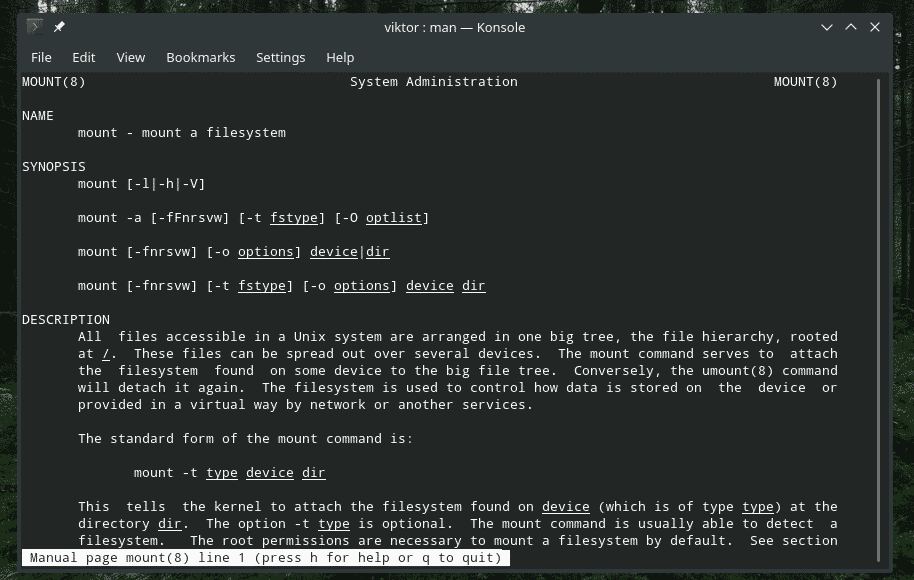


5v but that class happened a long time ago. But when you eject a USB device you power it down and it ceases to draw the 5v it would typically - I think it trickles down to. umount an internal hard disk's file-system and you'll see the same behavior for the same reason. The primary difference between eject and umount doesn't concern the disk at all - rather it is about the USB port's 5v power output.Īfter umount you can still see your disk listed in lsblk because it is still powered on and attached. Once you've done that you have successfully unmounted the filesystem and you needn't worry along those lines. Please note that using these commands or options can cause data loss for open files programs which access files after the file system has been unmounted will get an error.Umount is perfectly safe for the disk.
UNMOUNT DISK IN LINUX HOW TO
WARNING! These examples may result into data loss if not executed properly (see “ Understanding device error busy error” for more information). Linux Administrator How to Mount & Unmount Filesystem/Partition in Linux/UNIX by Santosh Prasad Contents. Suppose you have /dev/sda1 mounted on /mnt directory then you can use fuser command as follows: Linux fuser command to forcefully unmount a disk partition The following discussion allows you to unmout device and partition forcefully using mount or fuser Linux commands. # umount /dev/sda1 How do I list the users on the file-system /nas01/? As soon as that program terminates its task, the device will no longer be busy and you can unmount it with the following command:

All you have to do is stop vi process and run umount again. The mount command or tool is installed by default. Linux and all its distributions provide the mount command in order to mounts file systems and umount in order to unmount the already mounted file system. Output: vi 4453 vivek 3u BLK 8,1 8167 /dev/sda1Ībove output tells that user vivek has a vi process running that is using /dev/sda1. Mount operation is attaching a specified disk or partition into the specified path of the Linux root file system. If your device name is /dev/sdb1, enter the following command as root user: Try the following command to find out what processes have activities on the device/partition. There are many reasons for this (such as program accessing partition or open file), but the most important one is to prevent the data loss. Linux / UNIX will not allow you to unmount a device that is busy.


 0 kommentar(er)
0 kommentar(er)
